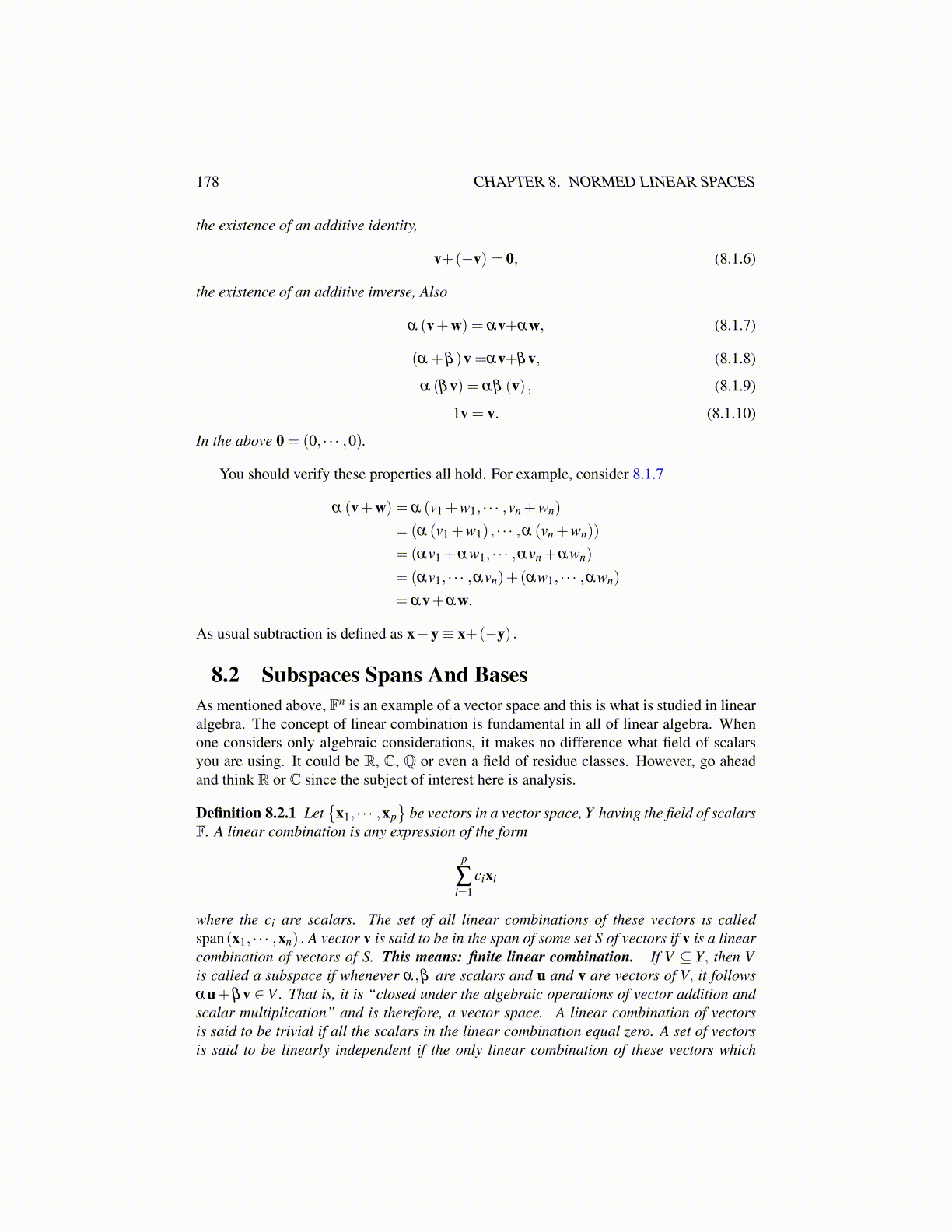
178 CHAPTER 8. NORMED LINEAR SPACES
the existence of an additive identity,
v+(−v) = 0, (8.1.6)
the existence of an additive inverse, Also
α (v+w) = αv+αw, (8.1.7)
(α +β )v =αv+βv, (8.1.8)
α (βv) = αβ (v) , (8.1.9)
1v = v. (8.1.10)
In the above 0 = (0, · · · ,0).
You should verify these properties all hold. For example, consider 8.1.7
α (v+w) = α (v1 +w1, · · · ,vn +wn)
= (α (v1 +w1) , · · · ,α (vn +wn))
= (αv1 +αw1, · · · ,αvn +αwn)
= (αv1, · · · ,αvn)+(αw1, · · · ,αwn)
= αv+αw.
As usual subtraction is defined as x−y≡ x+(−y) .
8.2 Subspaces Spans And BasesAs mentioned above, Fn is an example of a vector space and this is what is studied in linearalgebra. The concept of linear combination is fundamental in all of linear algebra. Whenone considers only algebraic considerations, it makes no difference what field of scalarsyou are using. It could be R, C, Q or even a field of residue classes. However, go aheadand think R or C since the subject of interest here is analysis.
Definition 8.2.1 Let{
x1, · · · ,xp}
be vectors in a vector space, Y having the field of scalarsF. A linear combination is any expression of the form
p
∑i=1
cixi
where the ci are scalars. The set of all linear combinations of these vectors is calledspan(x1, · · · ,xn) . A vector v is said to be in the span of some set S of vectors if v is a linearcombination of vectors of S. This means: finite linear combination. If V ⊆ Y, then Vis called a subspace if whenever α,β are scalars and u and v are vectors of V, it followsαu+βv ∈ V . That is, it is “closed under the algebraic operations of vector addition andscalar multiplication” and is therefore, a vector space. A linear combination of vectorsis said to be trivial if all the scalars in the linear combination equal zero. A set of vectorsis said to be linearly independent if the only linear combination of these vectors which